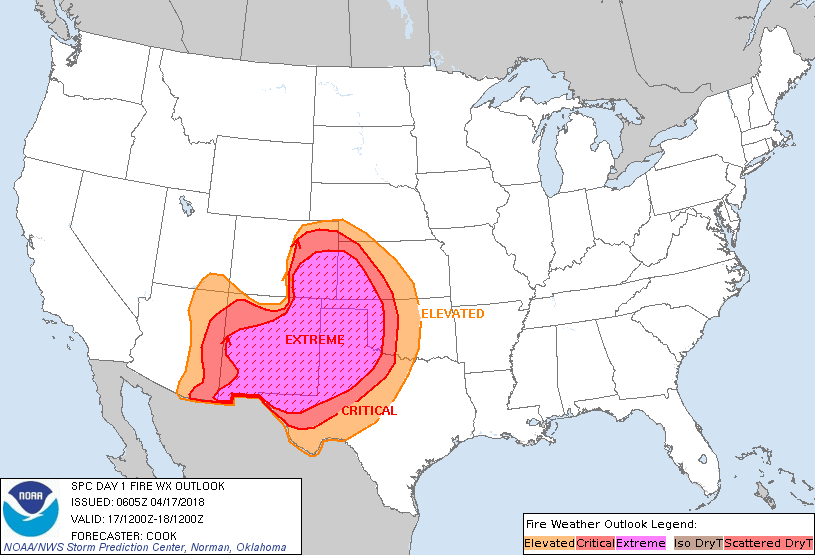The Oklahoma Department of Agriculture, Food and Forestry-Forest Service is predicting Tuesday, April 17, to show the worst fire conditions in a decade.
In its updated Fire Situation Report at 8:30 a.m., April 17, the agency announced a Red Flag Warning is in effect from 11 a.m. to midnight for a large swath of western Oklahoma, near and west of a line from Alfalfa County to Cotton County. And, it called upon the public to have exit plans and go-bags ready in case wildfire approaches their homes.
The report stressed that April 17 is shaping to be an “extremely critical fire weather day.” New fires will likely exhibit “explosive rapid rates of spread. Ongoing fires will require extensive patrol and mop up to prevent escape.”
The report further stressed that the fire danger near in the Red Flag Warning area “is forecast to exceed any fire weather conditions seen in over 10 years.” Afternoon relative humidity values are predicted to dip into the low single digits. The forecast calls for southwest winds are to be sustained at 25 to 35 mph, with 50 mph or more gusts in many areas. Temperatures are expected to reach the upper 80s to mid-90s.
“Wildland fuels in western Oklahoma remain critically dry,” the report stressed. “The chance for any ember or spark to start a fire today is 100 percent. Direct attack on the head of the fire will be impossible today and would be a life-threatening venture. Spread rates and flame lengths on the head of any fire will likely exceed anything experienced this year.” The report advised firefighters that the highest probability of success would include a direct attack/indirect attack on the flanks of any fire, coupled with indirect attack on the wildfire’s head. That depends, of course, on the fuel type and the terrain.
Ranchers might take these actions in rural areas to prepare for potential fire situations:
• Have a plan of action for pets and livestock. Have livestock trailers pre-positioned to load horses and livestock and at least two evacuation routes mapped from your farm or ranch.
• Scout areas where you could move pastured livestock to water and safety. These might include nearby green wheat fields. Talk with employees and neighbors about plans of action for moving livestock.
• Position farm equipment and implements so that they can be used in case firefighters need them. Fill water tanks and trailers so that they can be used.
• Clear fire fuel from houses and outbuildings, such as dead trees and tall grasses. This not only reduces risk of fire ignitions, but can also help firefighting crews quickly battle the fire.
• Follow emergency personnel directions in case of evacuation for your safety. Human lives are priority.
Jennifer M. Latzke can be reached at 620-227-1807 or [email protected].


